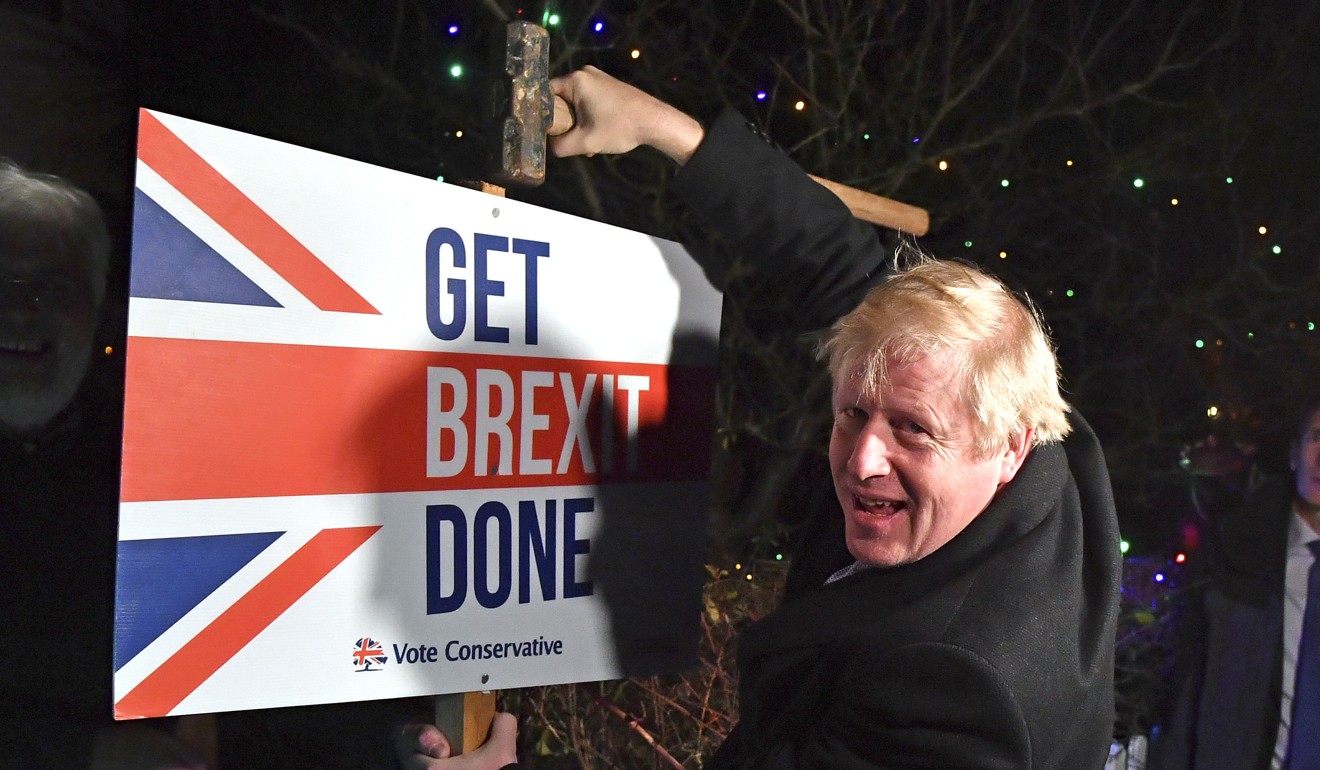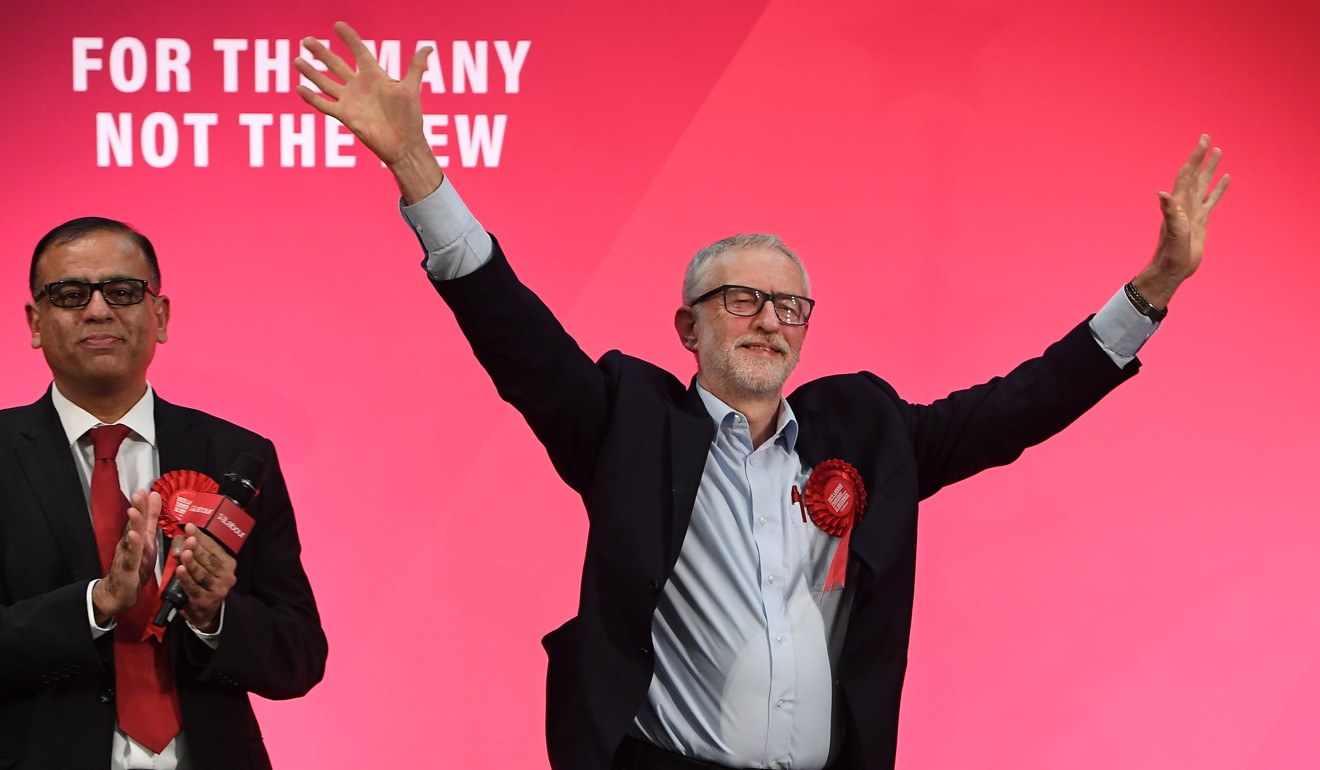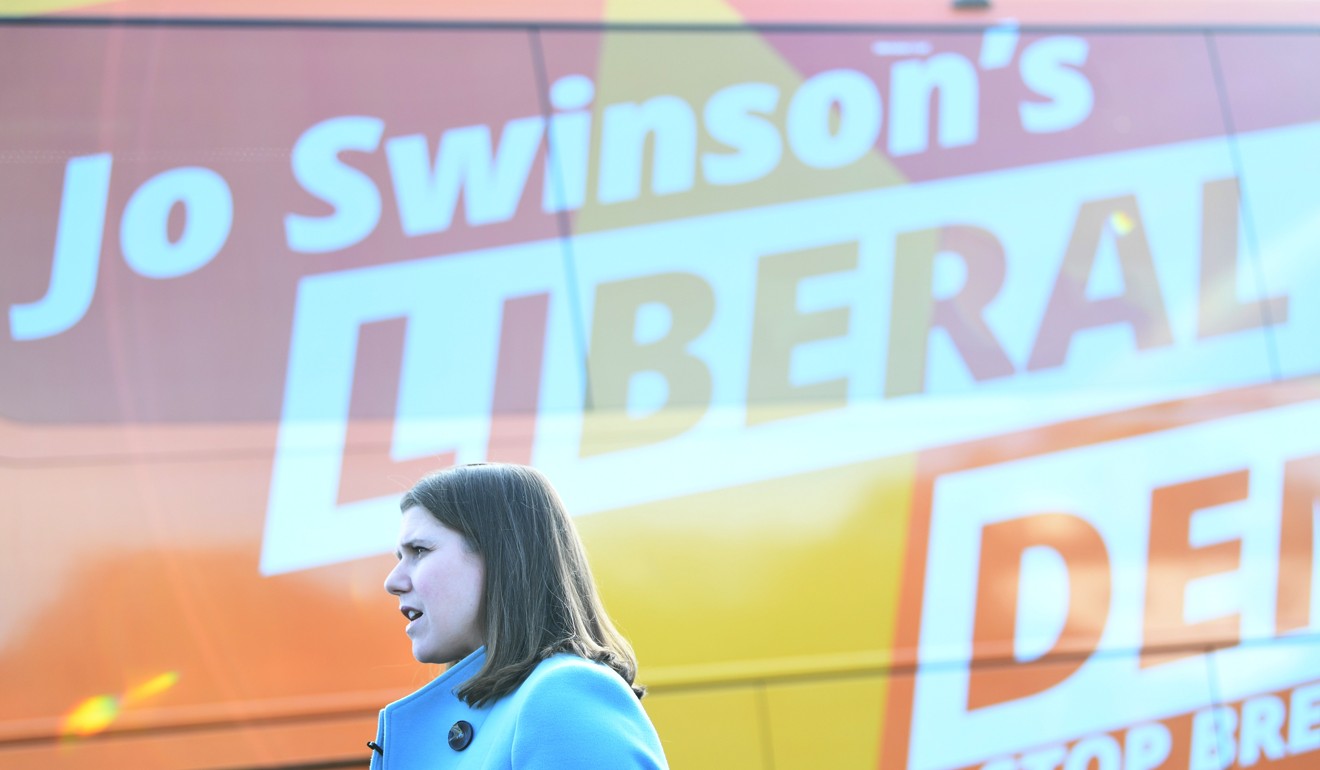
UK election 2019: when will we know the results?
- Here is a list of some key election results to watch for and when they are expected

The UK votes on Thursday to determine whether Prime Minister Boris Johnson gets the mandate he wants to “get Brexit done”, or Labour Party Leader Jeremy Corbyn replaces him in 10 Downing Street to pursue his “radical agenda” of wealth redistribution and nationalisations.
British general elections are decided by separate races in 650 districts, with each assigned a seat in the House of Commons. Most won’t change hands: just 70 did in 2017, with 111 doing so two years earlier.
But it’s the ones that do that determine who governs.
The polls have consistently pointed to a Tory win, though the margin has narrowed and according to YouGov, everything from a Tory landslide to a hung Parliament – where no party holds a majority -remains within the margin of error. A small change in voter mood could swing the election in either direction.
Below is a list of some key results to watch for and when.
10pm (6am Hong Kong time Friday)
Voting ends and broadcasters release their exit poll. Last time, it predicted 314 seats for the Tories and 266 for Labour – close to the final result of 317 to 262. Once enough results are in later in the night, psephologists employed by TV stations will announce their projections for the final result.
11pm (7am Hong Kong time)
The northeastern cities of Sunderland and Newcastle upon Tyne, with 3 seats each, are vying to be first to announce their results between 11pm and midnight.
The last time any Sunderland seat returned a Tory Member of Parliament was in 1959; Newcastle hasn’t done so since 1983. If Labour loses any of these seats, it suggests they’re set for a bad night. A swing in Brexit-supporting Sunderland in particular could point to Tory gains later in the night in marginal Labour seats that voted to leave the European Union in 2016.

1am (9am Hong Kong time)
With most of the early reporting seats having safe majorities, the first rumblings of change may come now.
The Tories have targeted a type of voter they dubbed “Workington Man”, defined as “a typically older, white, non-graduate male” from a northern town. Brexit-backing Workington, on the west coast, could be the first indication of whether Johnson’s party has broken through Labour’s “red wall” of seats in central and northern England. They need a 4.7 per cent swing to overturn a majority of almost 4,000.
North of the border, there could be more Labour misery with Rutherglen & Hamilton West expected to be the first Scottish seat to declare. The Scottish National Party are targeting Labour’s 265-vote majority.
1:30am (9:30am Hong Kong time)
Darlington – 35th on the Tory target list of Labour-held seats – is due to announce. If Johnson’s party can overturn Labour’s 3,280-vote majority on a 3.7 per cent swing, a 60-seat majority could be on the cards.
2am (10am Hong Kong time)
The pace picks up with more than 75 results expected. The Tories could pick up “red wall” Labour seats including Great Grimsby, Bury North and Bury South.
Wrexham, in north Wales, is another to watch, as well as two strongly Labour-held pro-Brexit seats in West Bromwich. None has ever voted Conservative, but polls suggest they’re in play.
Hartlepool is one of the stronger seats for Nigel Farage’s Brexit Party, though polls suggest it’s unlikely to win. In Lanark & Hamilton East, just 360 votes separated the winning SNP from the Tories and Labour last time.
Battersea and Putney should provide insight into how Johnson’s pro-Brexit message is faring in Remain-backing London seats.
3am (11am Hong Kong time)
Results will be coming in at about six per minute by now. If the Tories are on a roll, they could take Sedgefield – former Labour Prime Minister Tony Blair’s seat until 2007 – as well as Labour seats including Bedford, Bishop Auckland, Newcastle-under-Lyme, Blackpool South and Birmingham Northfield. A win in Don Valley, Labour-held since 1922, could be a sign the Tories’ “Get Brexit Done” slogan has cut through – even though Caroline Flint, the Labour incumbent, supported Johnson’s deal.
In North Wales, a battle in Ynys Mon between the Tories, Labour and the Welsh nationalists Plaid Cymru could go the ruling party’s way for the first time since 1983, while Alyn & Deeside and Delyn are also in Conservative sights.
But if Labour are confounding expectations – as they did two years ago – they could pick up Bolton West and Norwich North from the Tories. Holding Peterborough, which voted 63 per cent to leave the EU, would suggest Labour’s plan to hold a second referendum hasn’t damaged its prospects. A big scalp could come in London, where Labour are mounting a strong challenge to former Tory leader and prominent Brexiteer Iain Duncan Smith in Chingford & Woodford Green.

A Labour revival also requires picking up seats in Scotland, its former stronghold. They need tiny swings to capture Glasgow East and Glasgow South West from the SNP, and a 1.6 per cent swing to capture Glasgow North.
Corbyn is expected to broadcast comments after his very safe Islington North seat declares. Liberal Democrat Leader Jo Swinson is also likely to speak when Dunbartonshire East seat announces. She’s defending a majority of 5,339.
Elsewhere in Scotland, the SNP aim to overturn Tory majorities in the district of Ayr, Carrick & Cumnock, and in Stirling.
Key Liberal Democrat targets include the Cities of London & Westminster, where Labour defector Chuka Umunna is their candidate, Guildford, and Esher & Walton, where polls suggest they have a chance of overturning Foreign Secretary Dominic Raab’s huge majority.
In Belfast North, the Democratic Unionist party’s Westminster leader Nigel Dodds faces a challenge from Sinn Fein. And former attorney general Dominic Grieve, who was ejected from the Tory Party over Brexit, is running as an independent in Beaconsfield to try to overturn the majority of more than 24,000 he won for the Conservatives in 2017.
3:30am (11:30am Hong Kong time)
Close to half of the results should be in by now. If the Tories are doing well, they could defeat former Liberal Democrat Leader Tim Farron in Westmorland & Lonsdale, or overturn the SNP’s 21-vote majority in Perth & North Perthshire. Labour is eyeing an opportunity to take former Home Secretary Amber Rudd’s old seat of Hastings & Rye, where the Tory majority is 346.
4am (12pm Hong Kong time)
Even with 180-odd seats still to report, the direction of travel should be clear.
A tiny swing from Labour would be expected to give the Conservatives Crewe & Nantwich, and Canterbury, which Labour won in 2017 for the first time. A swing of just under 5 per cent to the Tories would win them Bassetlaw for the first time since 1910; Ipswich, Lincoln, Wakefield and Warrington South require much less than that.
Results are also due in two Liberal Democrat target seats held by the Tories: Cheltenham and St. Albans.
4:30am (12:30pm Hong Kong time)
More than 500 seats should have declared and unless it’s really close, the winner should be clear. Johnson will be expected to speak after the declaration at his Uxbridge & South Ruislip seat, where Labour is targeting his majority of 5,034.
Tory targets include Weaver Vale and Kensington – which Labour took for the first time in 2017 by just 20 votes. Though the Tories only won Mansfield for the first time in 2017, Labour regaining it would be a surprise and a sign they’re doing better than expected.

5am (1pm Hong Kong time)
If the election is still too close to call, it’s because Labour is picking up seats. Five of the party’s 10 most-winnable Tory-held targets report: Southampton Itchen, Stoke-on-Trent South, Pudsey, Calder Valley and Broxtowe, where former Tory Anna Soubry is running and may cannibalise the Tory vote.
Tory targets include Bolsover, where a 5.7 per cent swing would see them defeat Labour’s Dennis Skinner, an MP since 1970. That would truly indicate the “red wall” has crumbled.
Another big – if unlikely – scalp for the Tories would be Labour education spokeswoman Angela Rayner in Ashton-under-Lyne.
Tory wins in Ashfield, Colne Valley, Dewsbury, Dudley North and Derby North, and two seats in Stoke-on-Trent, would suggest they’re heading for a majority.
The Liberal Democrats will be hoping to pick up Cheadle from the Conservatives, and the SNP are targeting Tory-held Gordon – the former seat of their one-time leader Alex Salmond.
5:30am (1:30pm Hong Kong time)
Barrow & Furness is the Tories’ 6th most-winnable Labour-held seat; Environment Secretary Theresa Villiers is trying to hold off a Labour challenge in Chipping Barnet, where her majority was whittled to just 353 in 2017. Either could change hands.
6am (2pm Hong Kong time)
Only about 20 seats should be left – barring recounts. If the result is clear, expect Johnson or Corbyn to make a victory speech over the next few hours.
In Richmond Park in southwest London, the Liberal Democrats hope to eject Tory Environment Minister Zac Goldsmith for the second time in three years. They’re also looking to re-establish themselves in southwest England, where St. Ives is their best chance to do so after a narrow loss in 2017.
The last results are due at 10am (6pm Hong Kong time). If one party has a majority, the focus will switch to cabinet announcements. But if it’s a hung parliament, it’s all about potential coalitions or back room deals to prop up a minority administration.